It's early morning again ... in the post that deals with the first days of September, but also in the real life, in the present time, where I'm writing and a small moth is resting in the upper left angle of my PC monitor.
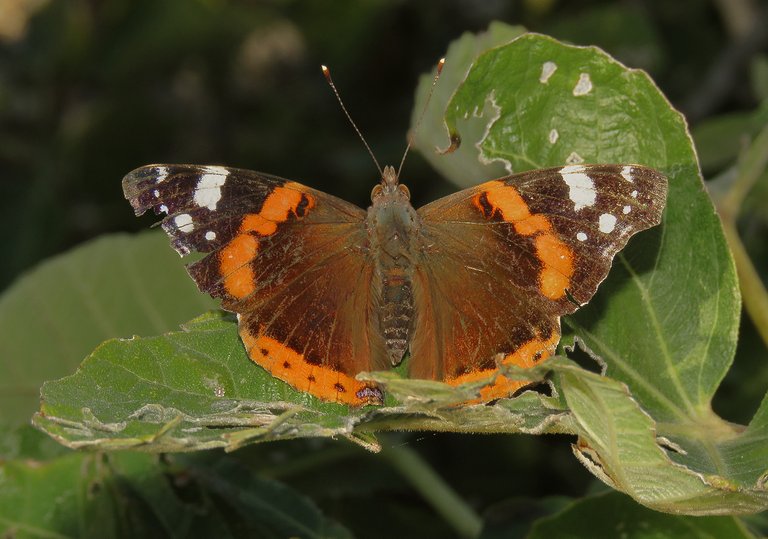
While sitting in my old blue chair, I'm transported outdoors ...
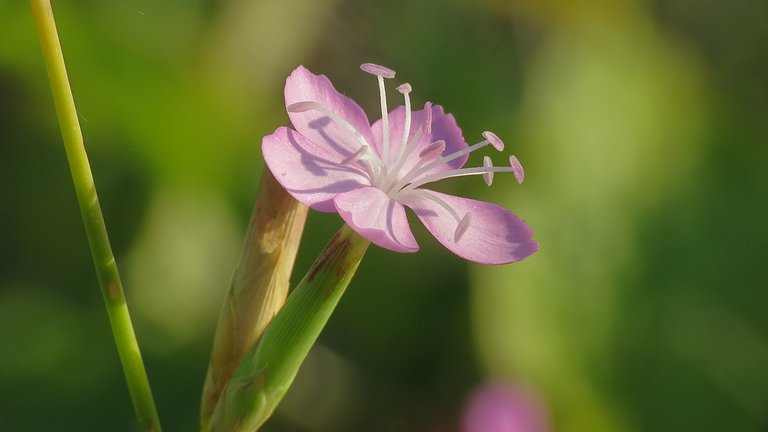
... I'm on the stony hill again, about half kilometer from the sea ...
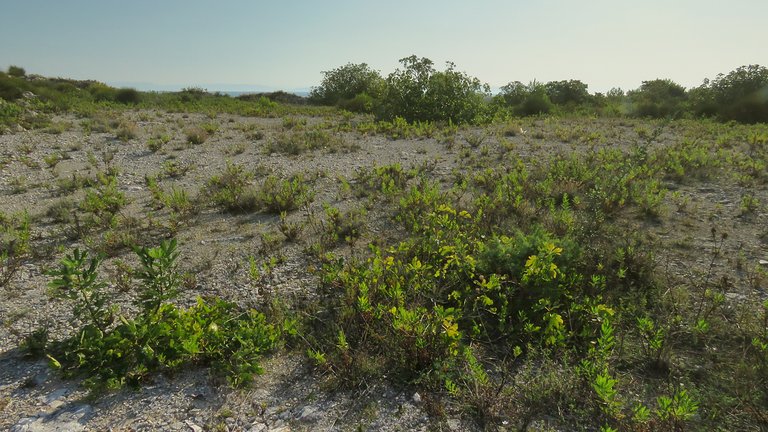
... enjoying the raw breakfast directly from the tree ...
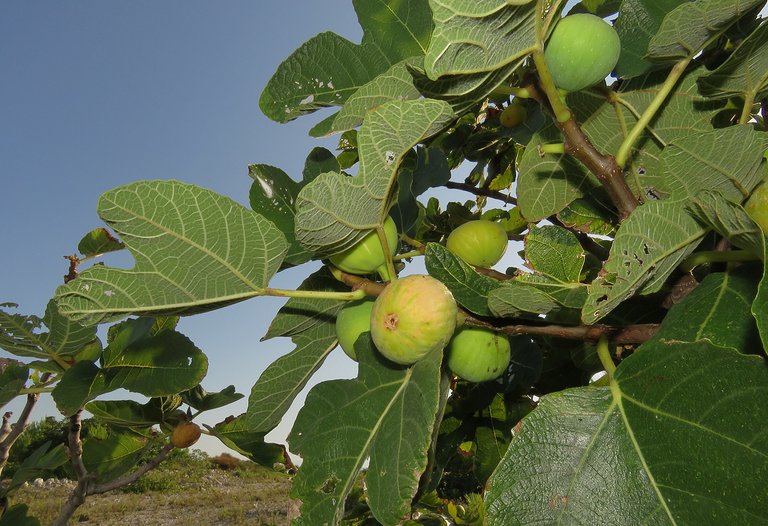
... and searching for interesting stuff in the surrounding nature. Plants and insects, mostly.
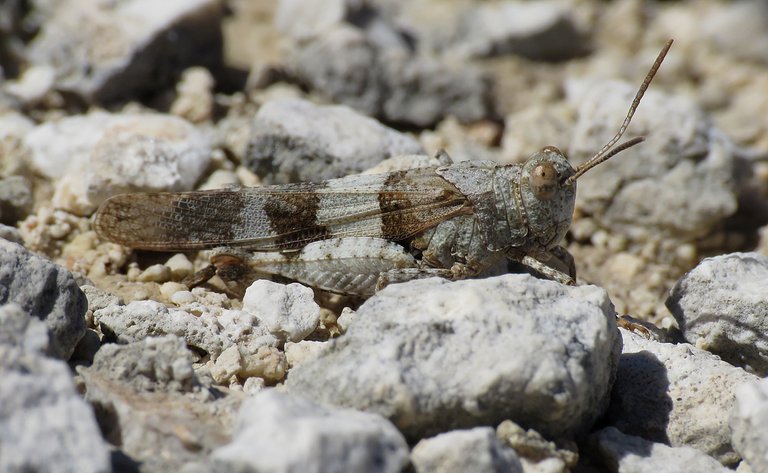
Here you can see an almost visible grasshopper :) camouflaged among rocks.

Here I got closer with the camera ... the grasshopper is slightly more prominent in the shot ... but with such a good camouflage, it still looks like it could disappear from sight at any moment. This is the Oedipoda caerulescens, a species very at home in dry and sunny areas. When the insect jumped away ...
... this flower has caught my attention.
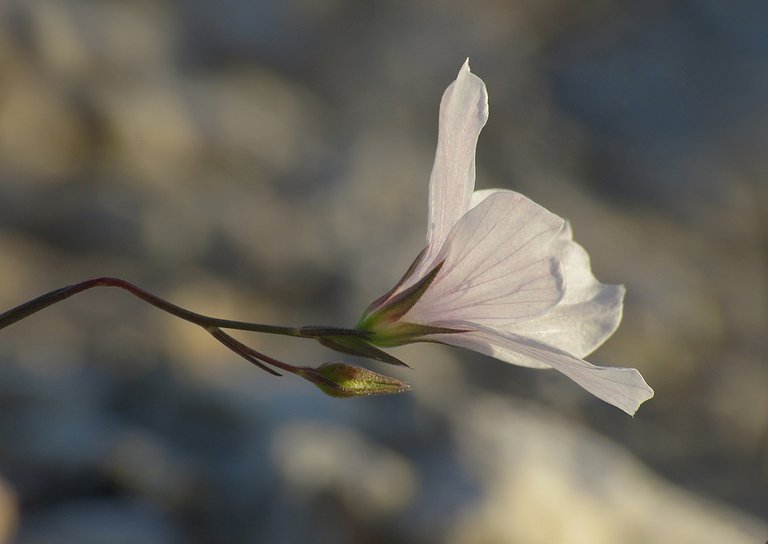
It was growing very near and was also kind of hidden in plain sight ... very beautiful but easy to overlook.
I don't know what plant is this ... and I encounter these flowers only in few very limited stony areas. While I was sitting in the dust, photographing all this ...
... the small wall lizard (Podarcis sicula) was observing my every move.
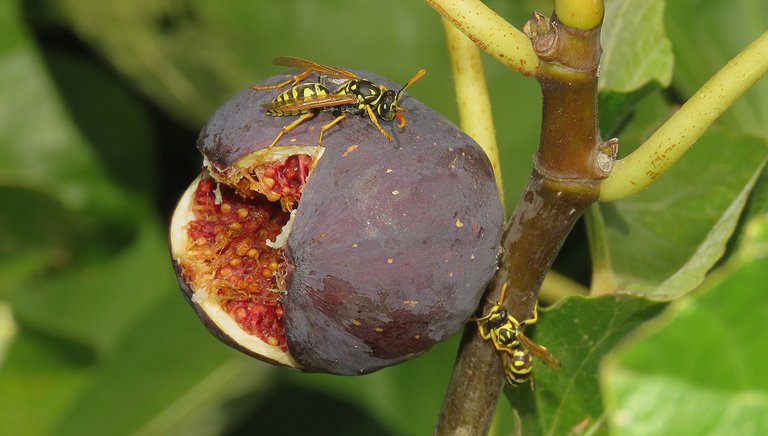
The fig season lasted about three weeks ...
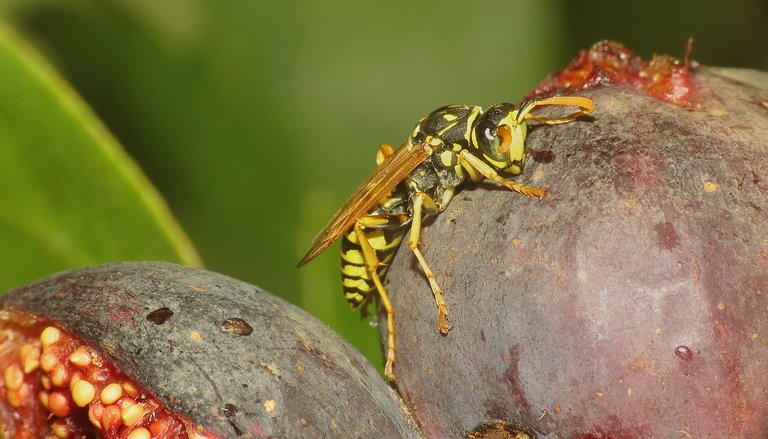
... and besides the wasps ...
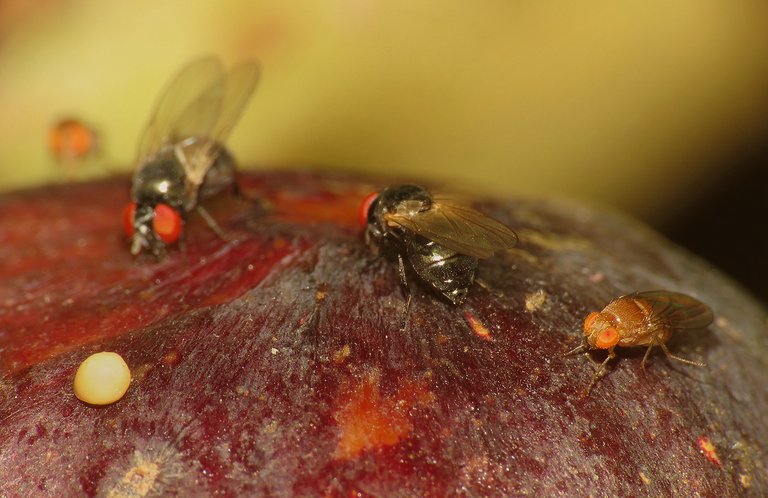
... the flies were the more numerous insects around the fruits.
Quite a few species were feeding together.
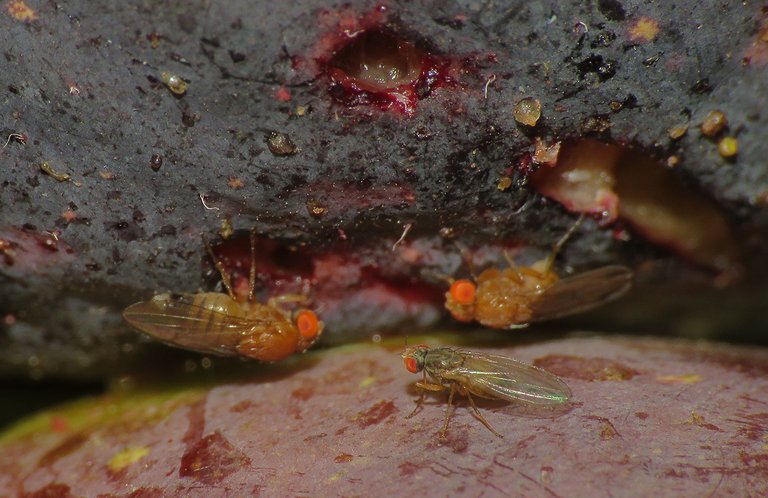
On this photograph you can see two very common Drosophila melanogaster fruit flies ... and some third, slightly smaller fly, of some species unknown to me. All these flies are similarly small ... but on the following photograph ...
... you can see the Drosophila melanogaster enjoying the sticky sweet liquid and some much bigger fly blurred in the background, feeding on the same fruit.
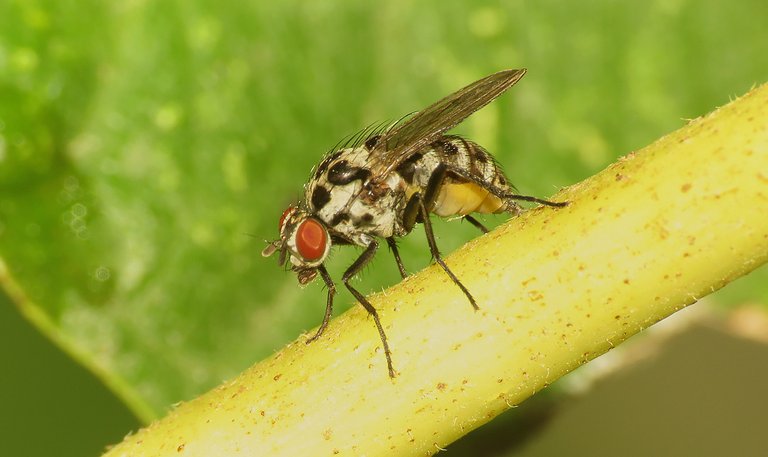
Here you can take a better look at the giant from the previous shot.

This is the Anthomyia procellaris ...
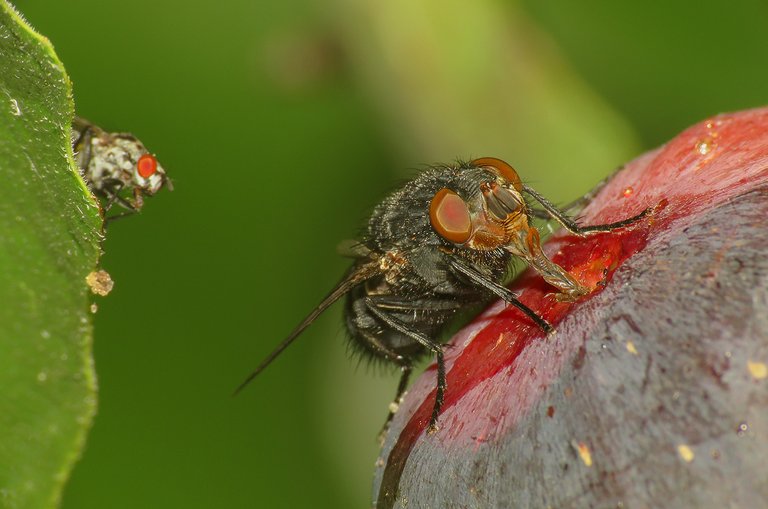
... and is pretty small when compared to the real giant ...
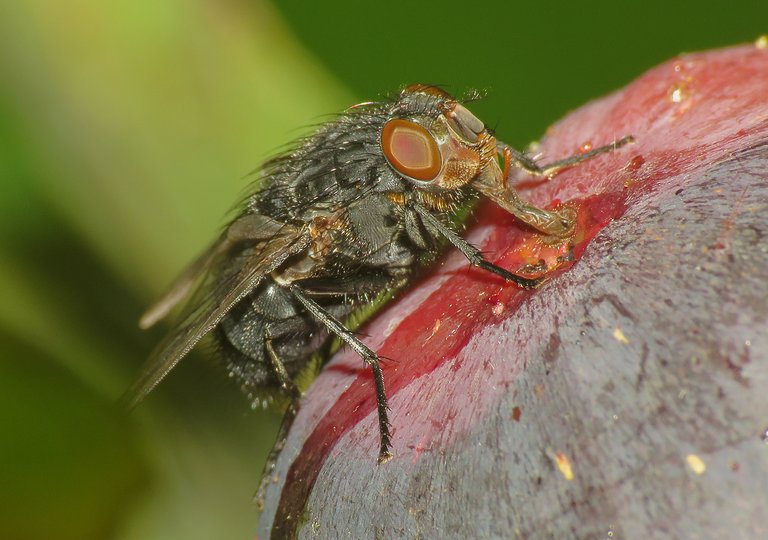
... Calliphora vicina ...
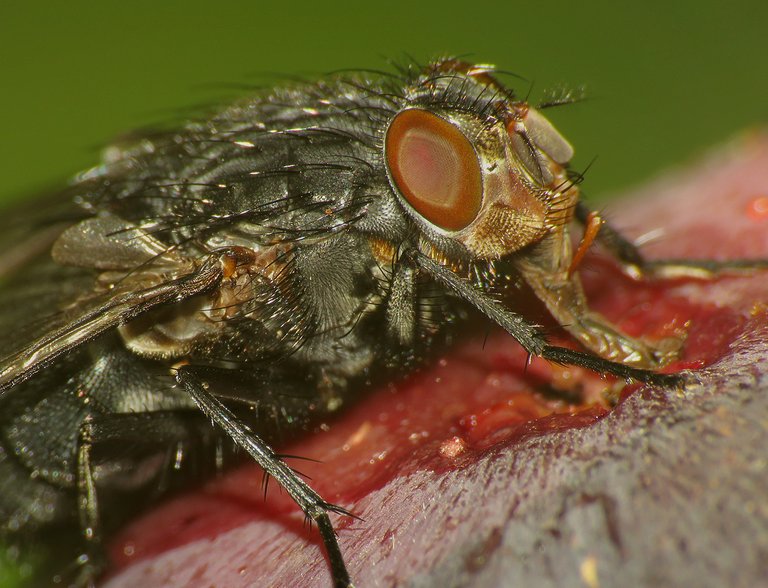
... which is a fat, hairy fly, considerably larger than the species you saw before ...
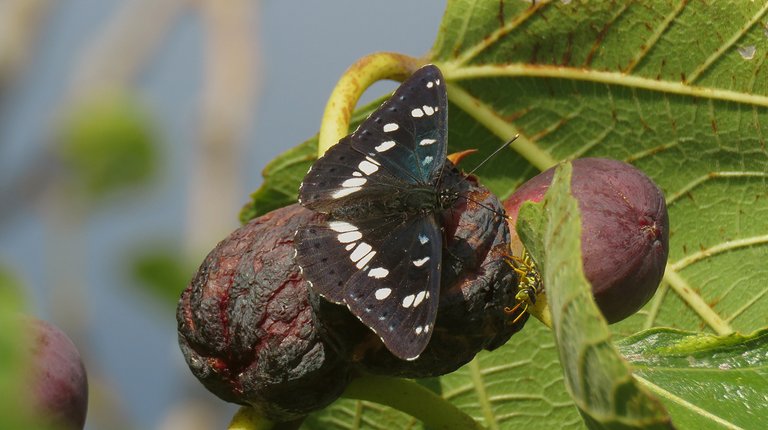
... but still small ... when compared to this butterfly, ad example ...
... the Southern white admiral (Limenitis reducta).
As you can see through the last three photographs in a row, the colors and the shine on the upper surface of the wings of this butterfly, shift and changes depending on the direction and quality of light.
The other side of the wings is also beautiful, but in a pretty different way.
Red admirals (Vanessa atalanta) are also fond of these fruits. This one is feeding upside down ... on the lower branches of the tree.
This other one is enjoying the higher figs, on the top of the tree.
This one is just resting on the large leaf ... somewhere in the middle.
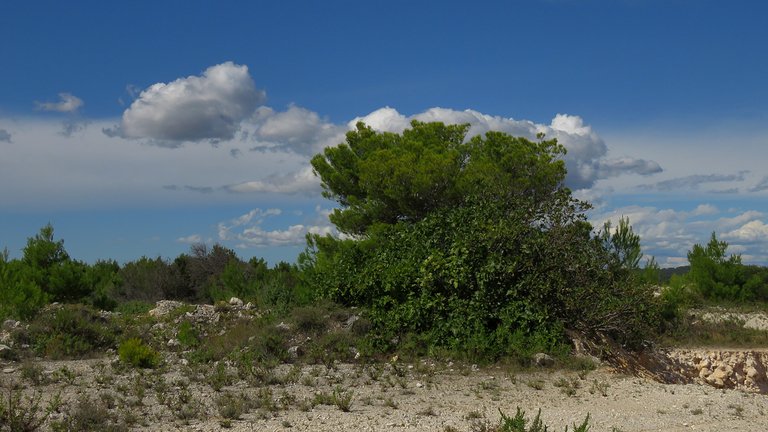
This is a short look at the setting ... just to not forget in what kind of place we currently are.

The Polistes gallicus paper wasp are often half berried in the fruit ...

... while enjoying the sugary interior.
This one just got out of the cracked fruit.
This other wasp is on its way into the fruit.
This shiny green thing is a beetle ...
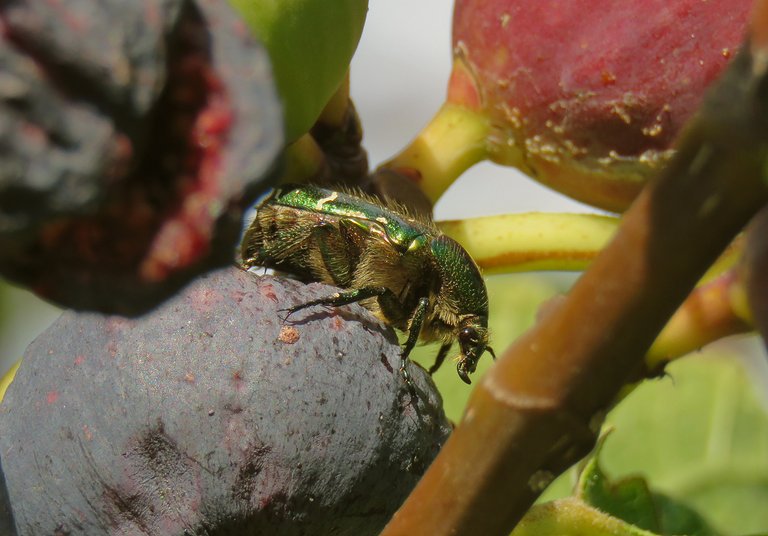
... Cetonia aurata ... the European rose chafer.

As adults, these beetles feed mainly on pollen and nectar, especially on various roses, both cultivated and wild ... sometimes they eat petals and foliage as well ... but here ...
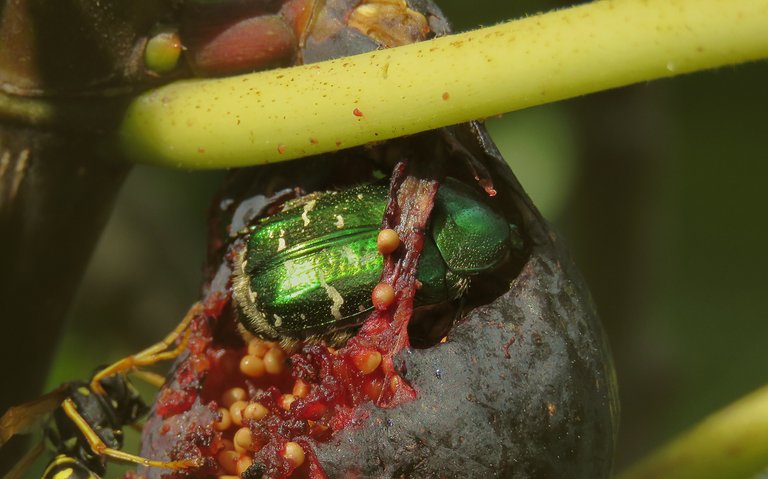
... they like to bury themselves in figs ... usually surrounded bay wasps.

If you like the metallic green shine, :) here is a bit more of that stuff for you ... on another insect. Lucilia sericata ... the Common green bottle fly.
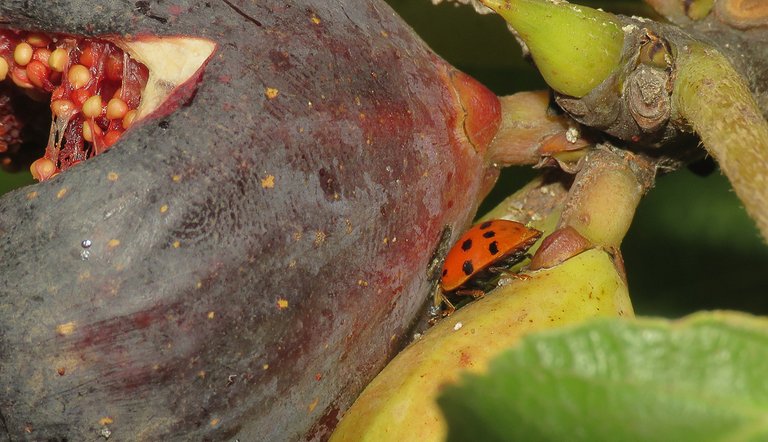
On this photograph, the Asian ladybug Harmonia axyridis, well established in this area, is exploring the fig tree.

On the Clematis vitalba leaf, down beneath the tree, a pair of these Lady beetles are mating ...
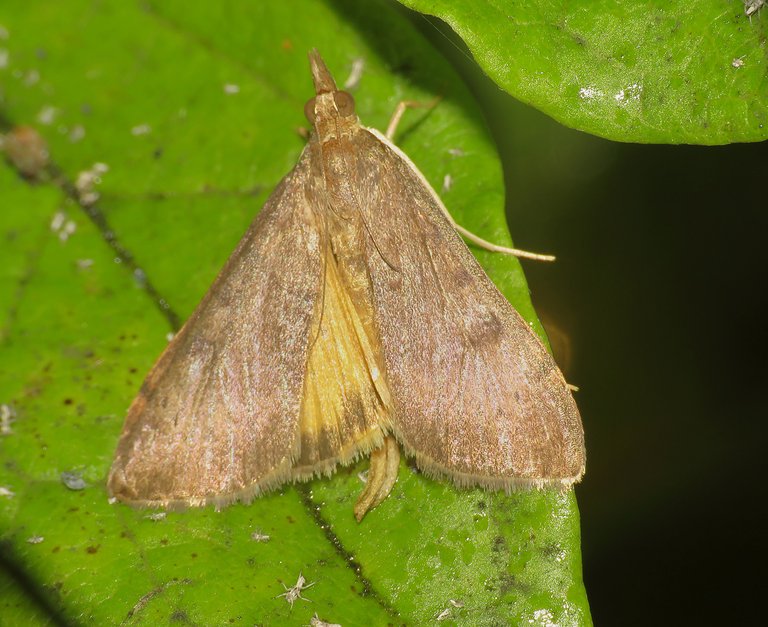
... and on another leaf nearby, a moth is resting. I couldn't find the exact species through a fairly long internet search ... I mean, I found a North American species that looks very similar ... but ... it just looks pretty similar :) that's all ... I think. Nowhere was written that is present in Europe.
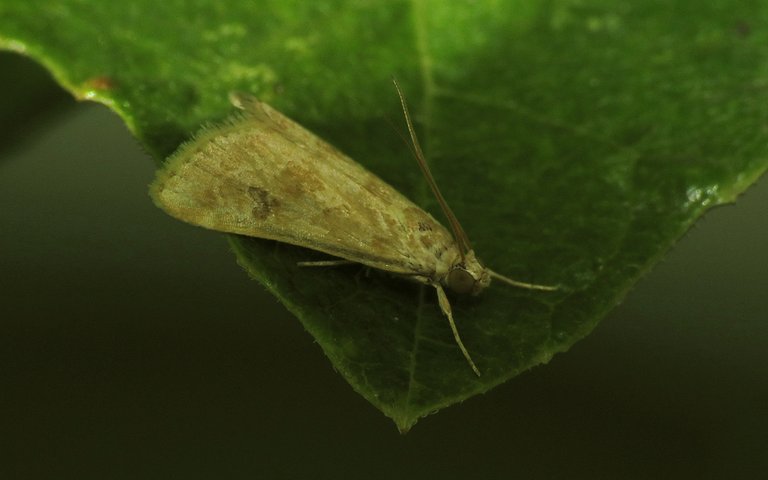
This considerably smaller moth was hiding deep in the shade, among the large leaves of the fig tree ... while the one on the following photograph ...
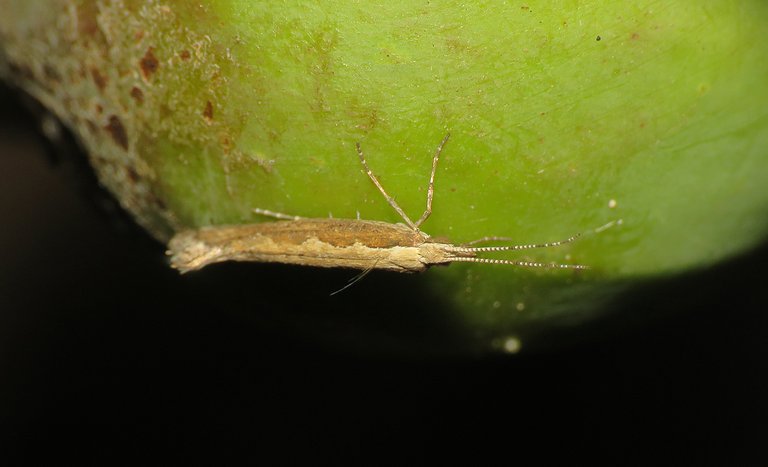
... a very small one ... was photographed on the fruit.
This is the Diamondback moth (Plutella xylostella).
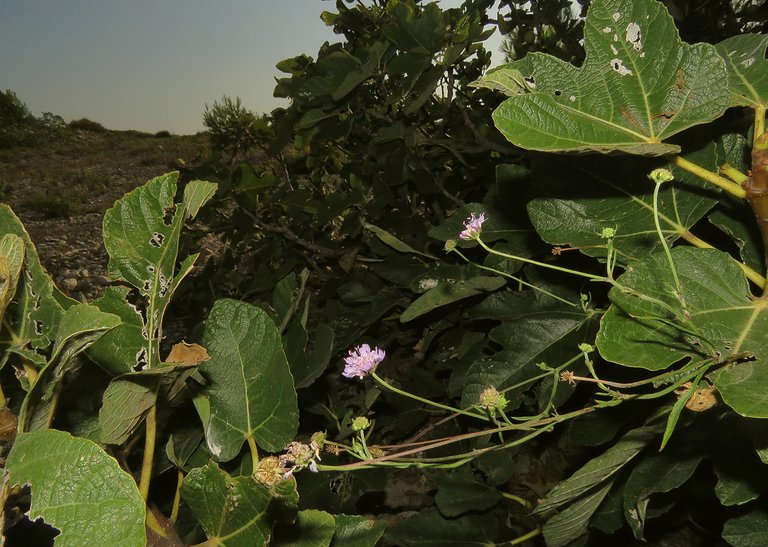
Herbaceous plants are growing under some of these trees. This is the Knautia arvensis.
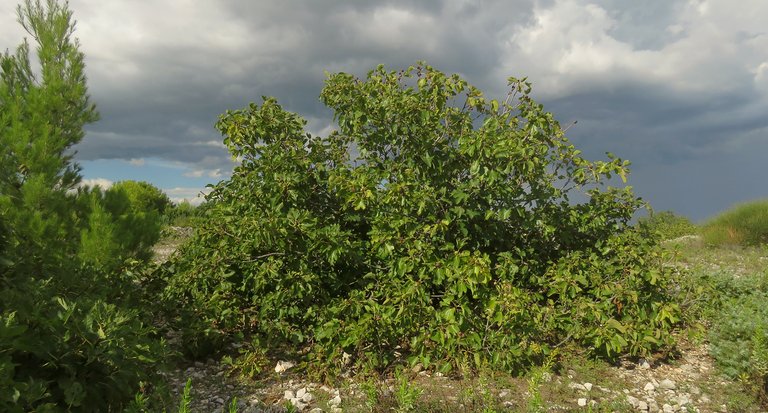
Here you can take a look at the entire tree on which many of today's photographs were taken.
This Podarcis sicula lizard was found and photographed under the tree ...
... among the dry, fallen foliage ...
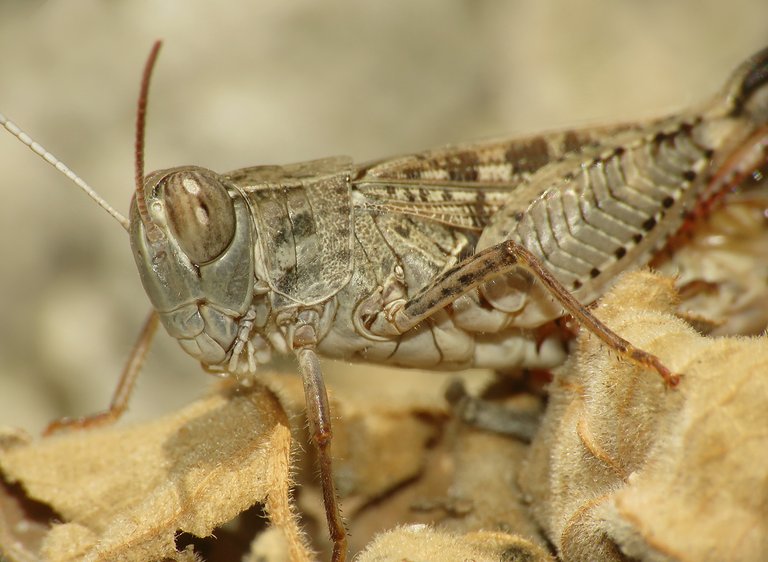
... just like this Common pincer grasshopper (Calliptamus italicus).
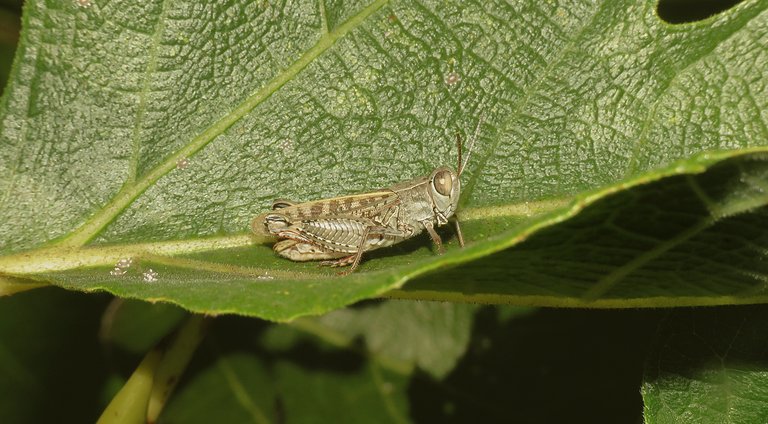
Here you can see another Calliptamus italicus ... this one in green ambiance ... on the living leaf, low on the tree.
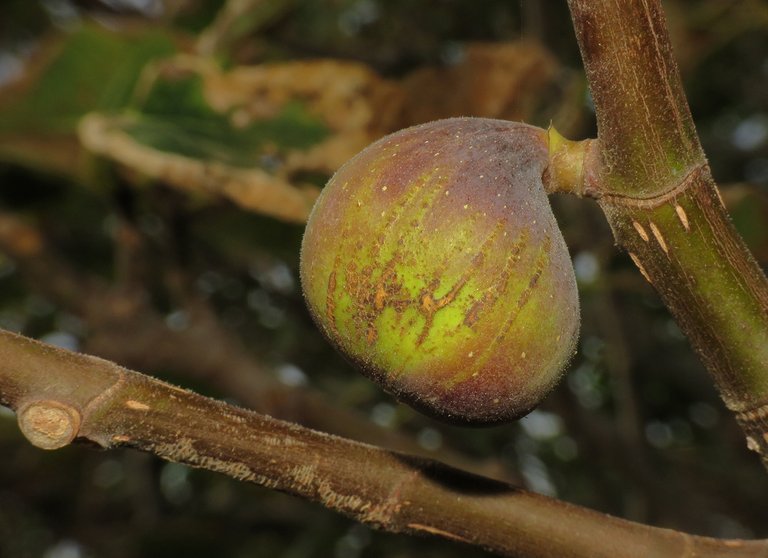
This is just an ordinary fig ... one that I ate soon after this shot was taken.
I took this enlargeable shot while trying to catch the Red admiral. I completely ignored other insects. Didn't notice them at all. Only later on the PC monitor I noticed this cool combination of species. It's a nice little detective game, trying to spot them all. There is a wasp ... a metallic green fly ... some other gray fly ... and even a strange Mantid lacewing in the upper left corner ... I mean on the border of the picture, near that corner.
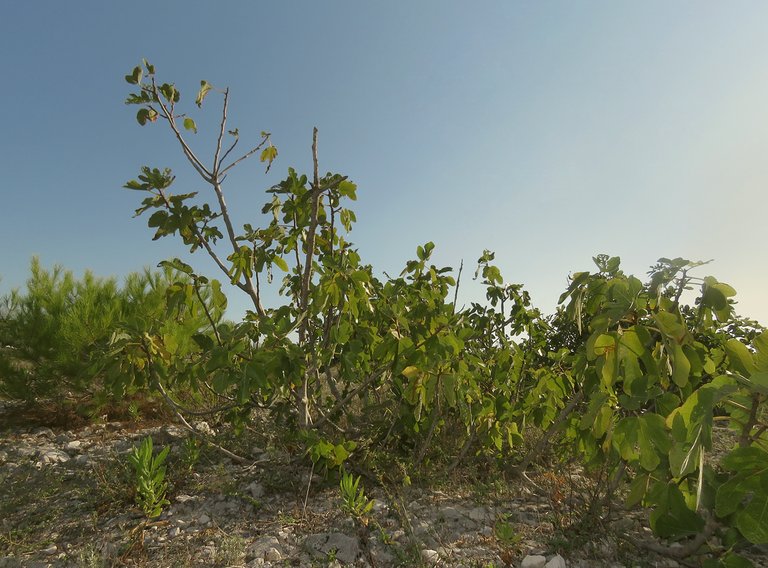
Besides the larger fig trees with plenty of fruits ... you can always see some smaller ones in the open spaces between the larger and taller ones. They have no fruits ... or just a few fruits ... always hard and dry ... they never get sweet and palatable.

These pink flowers are very common here among the rocks.
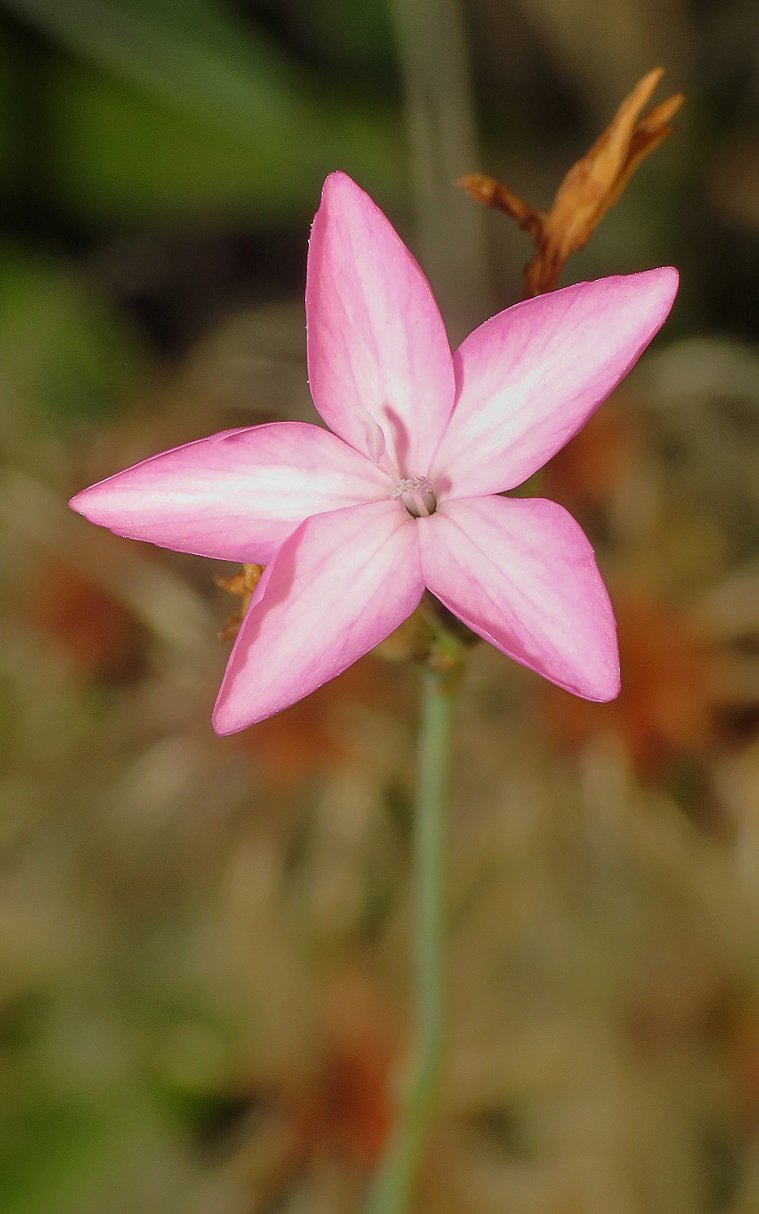
Some of them have slightly folded petals ... and look like little stars.

I don't know the name of this plant. Looks a bit like some kind of Dianthus ... but I'm far from sure.
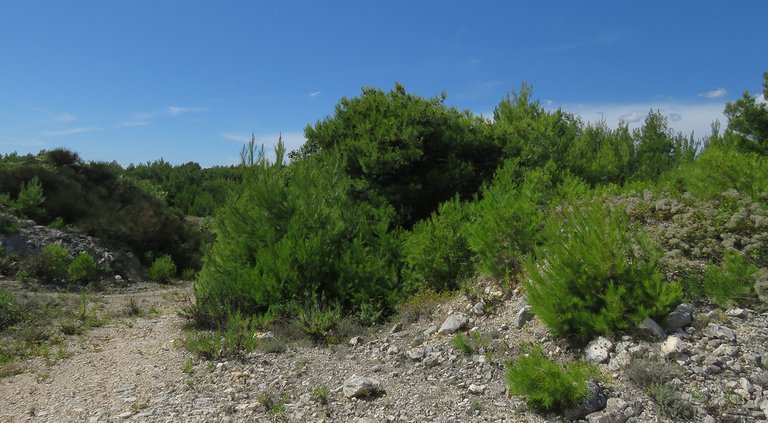
Here is yet another wider view of this habitat ... with pine trees as the main protagonists of the shot.

With this shot the focus returns to the figs. Small fruit flies Drosophila melanogaster are feeding on the ripened fruit.
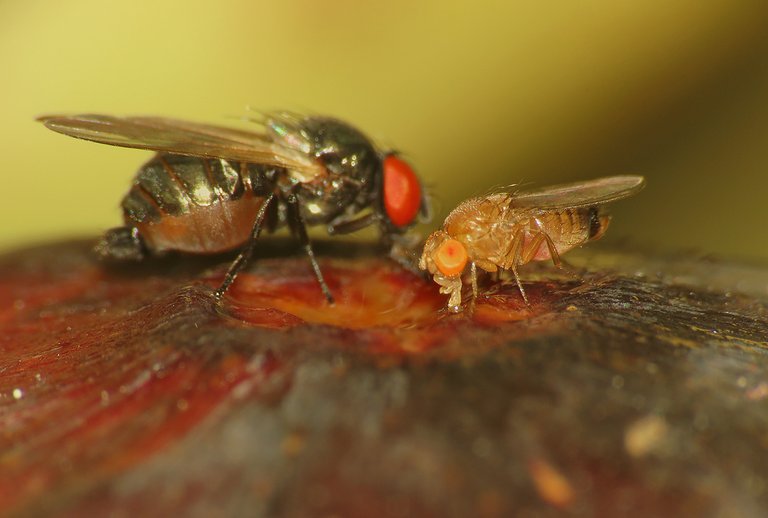
Drosophila in this photograph is shearing the fruit with another, slightly larger fly ... I don't know the name of that species.

Here you can take another look at the Anthomyia procellaris fly ... a species that just like the Drosophyla, you already saw earlier in the post ... but from a different angle.
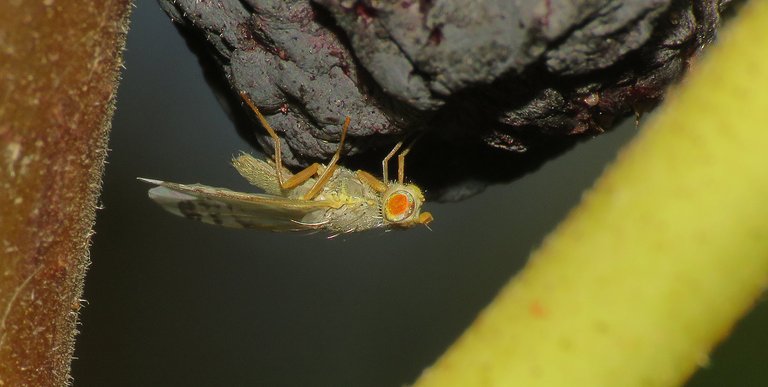
Here is another fly, a tiny, colorful one ... the name of this species is still unknown to me.
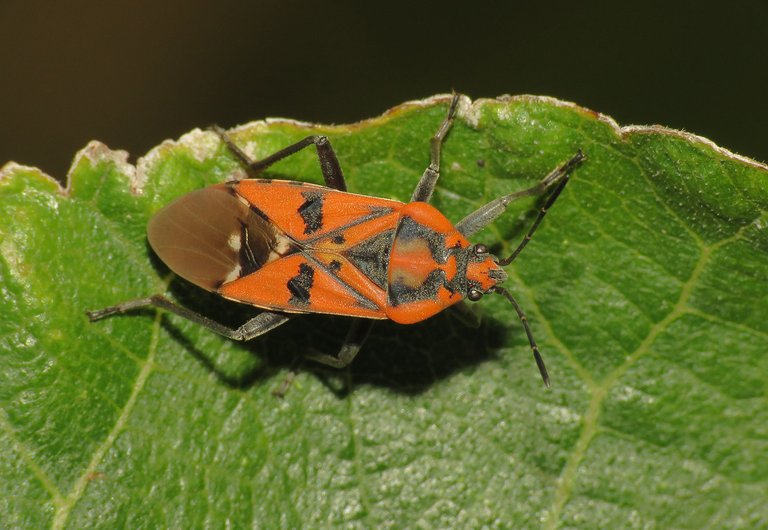
This Corizus hyoscyami bug is walking across the large leaf of the fig tree ... and with that image, the second part of this fig related mini - series ends.
As always in these posts on HIVE, all photographs are my work.
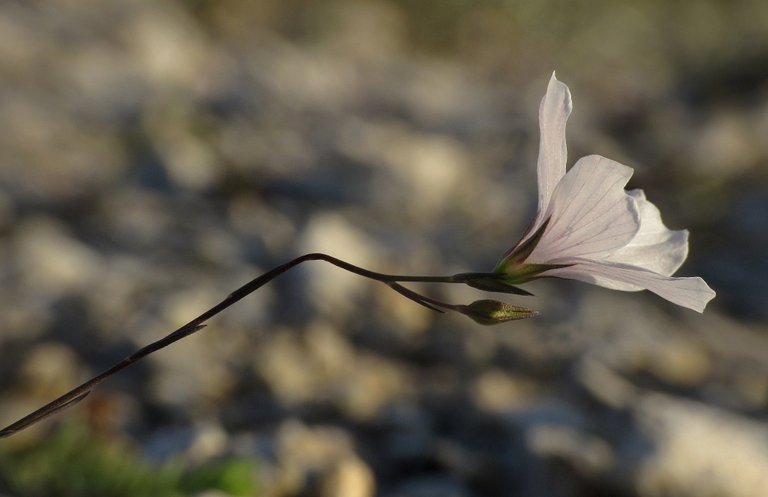

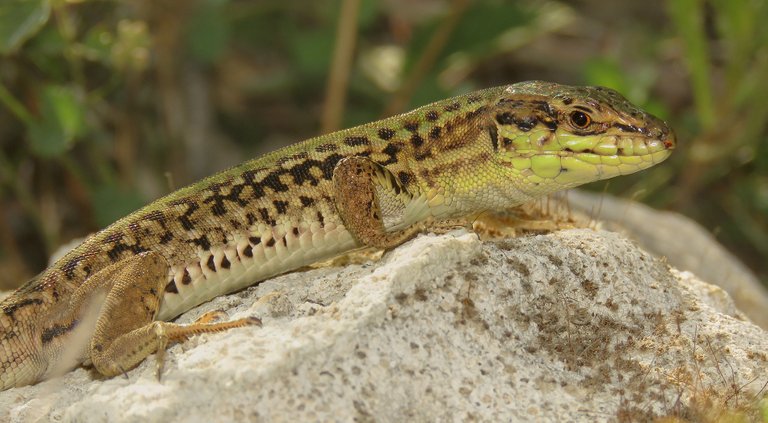
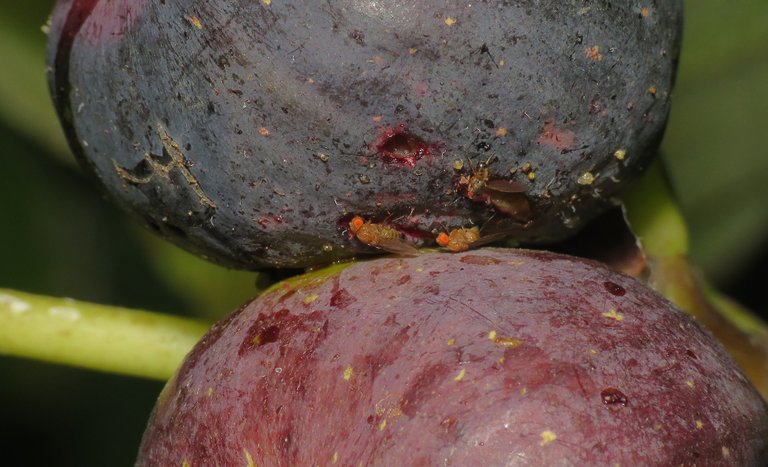
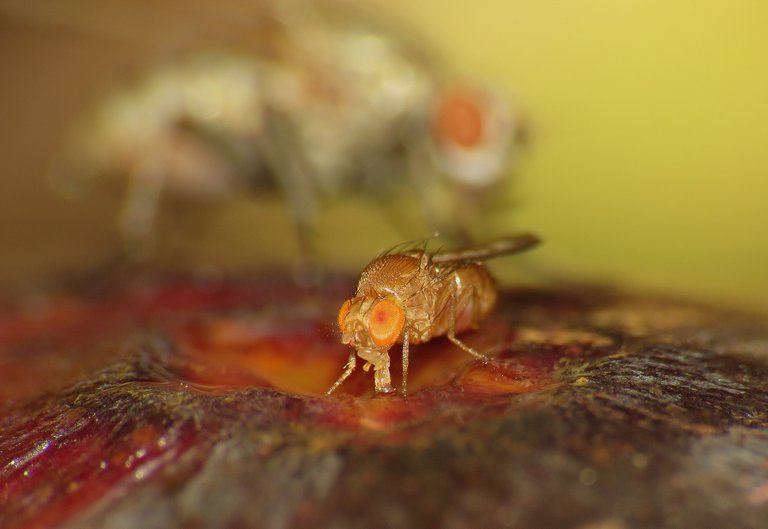
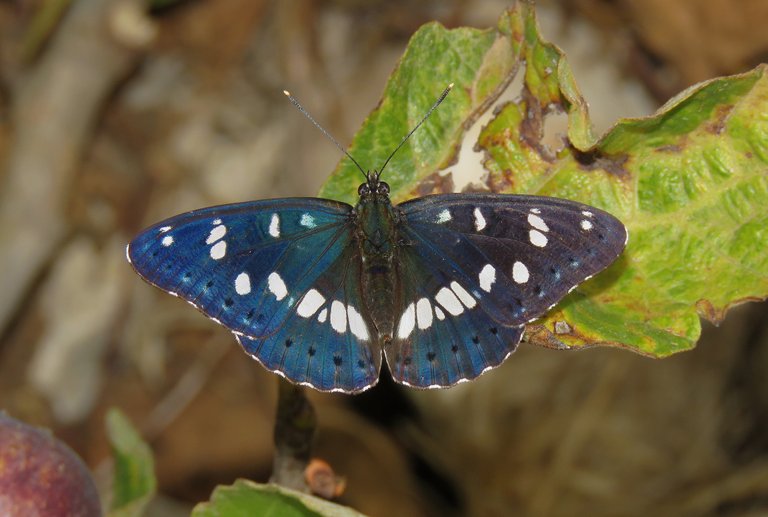

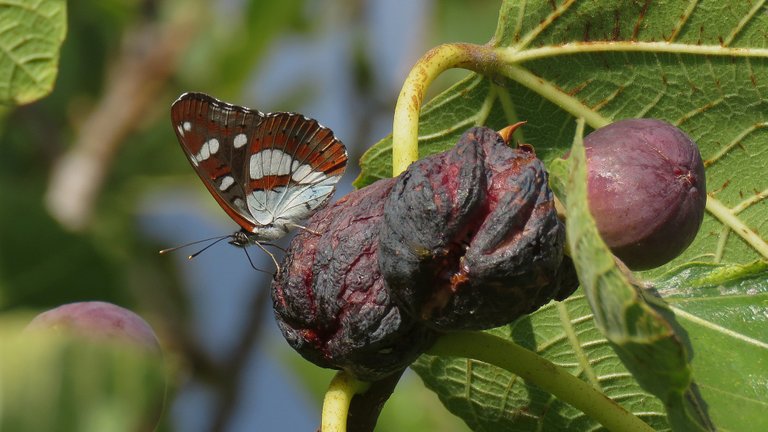
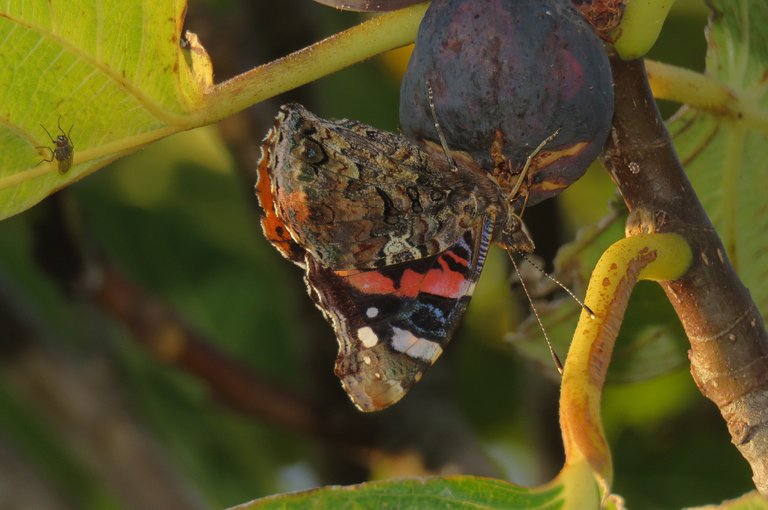


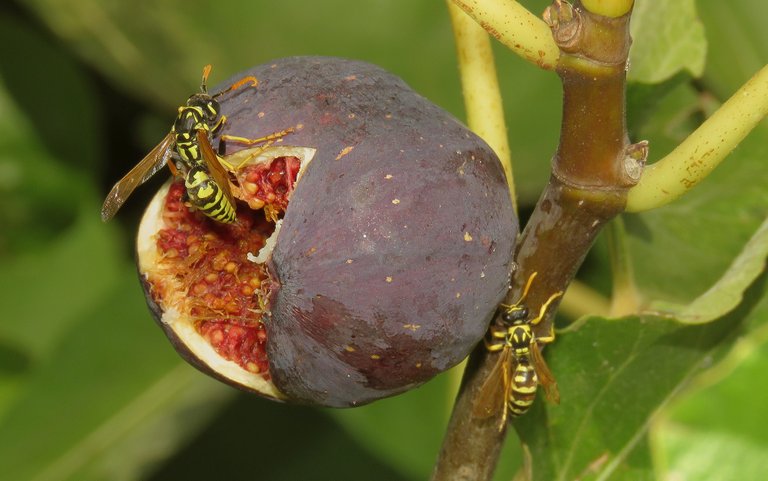
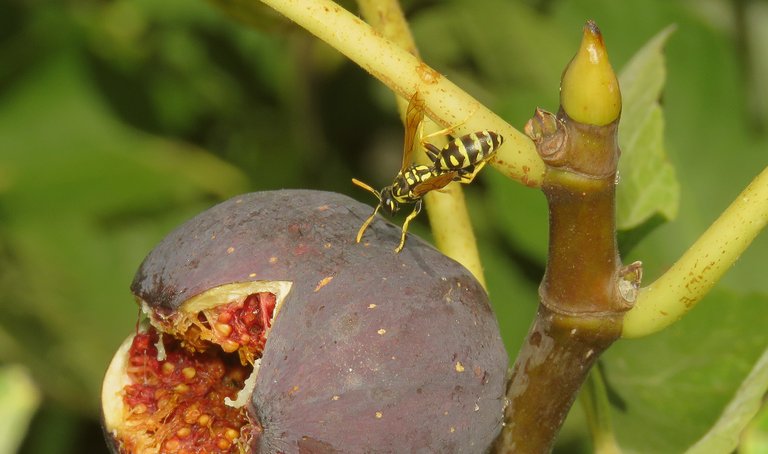
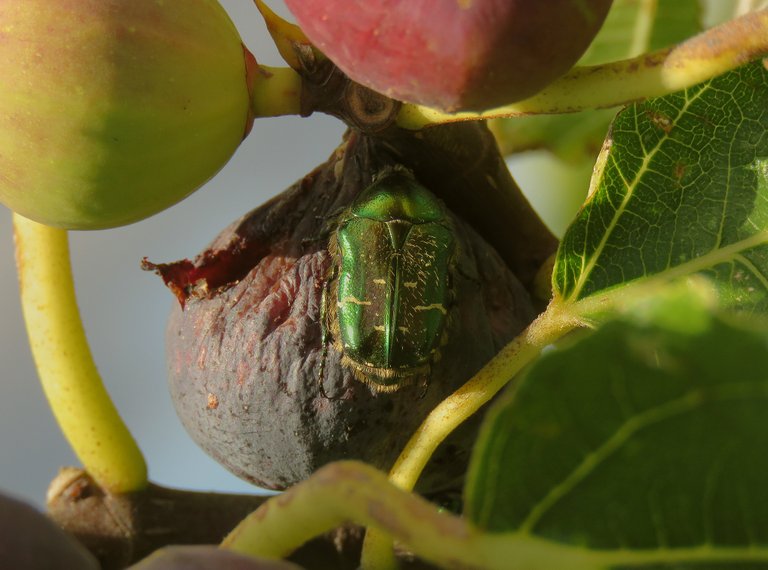
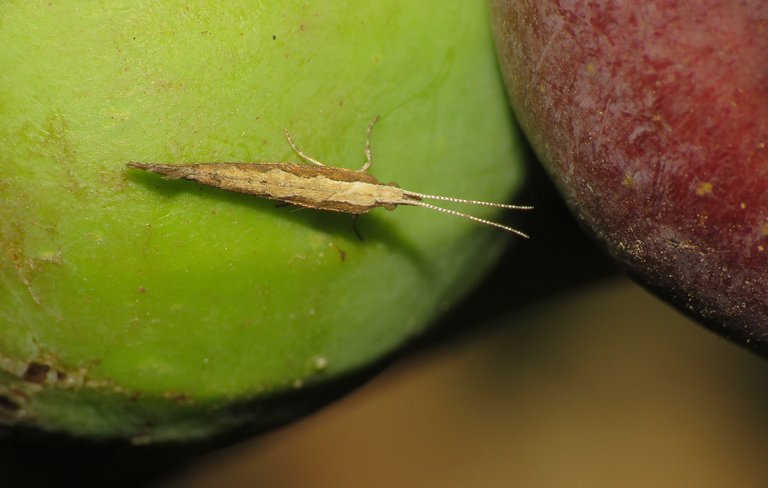
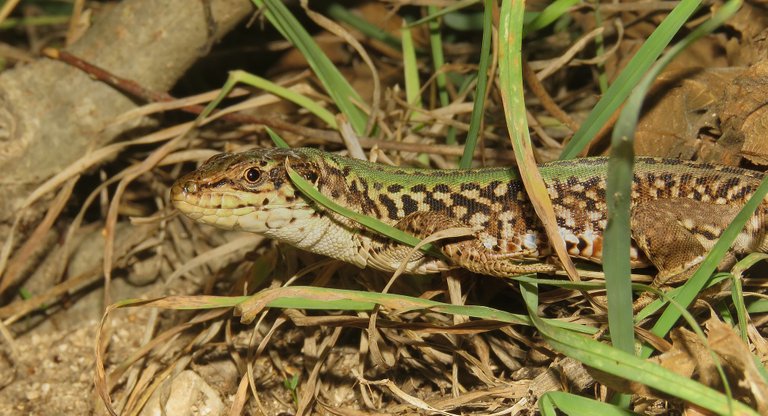
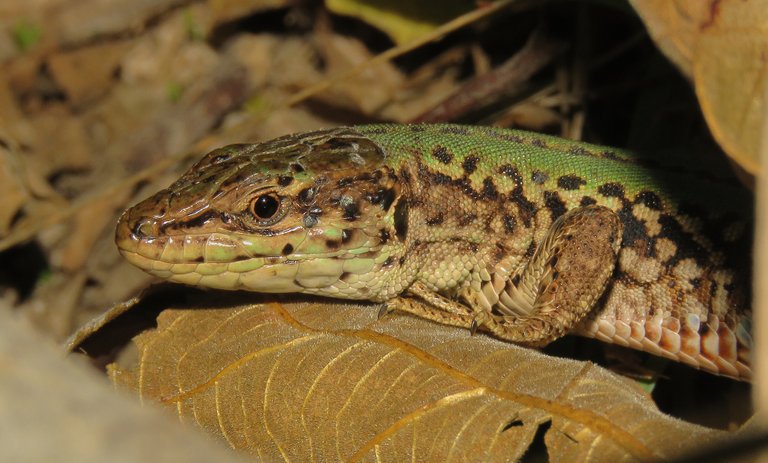
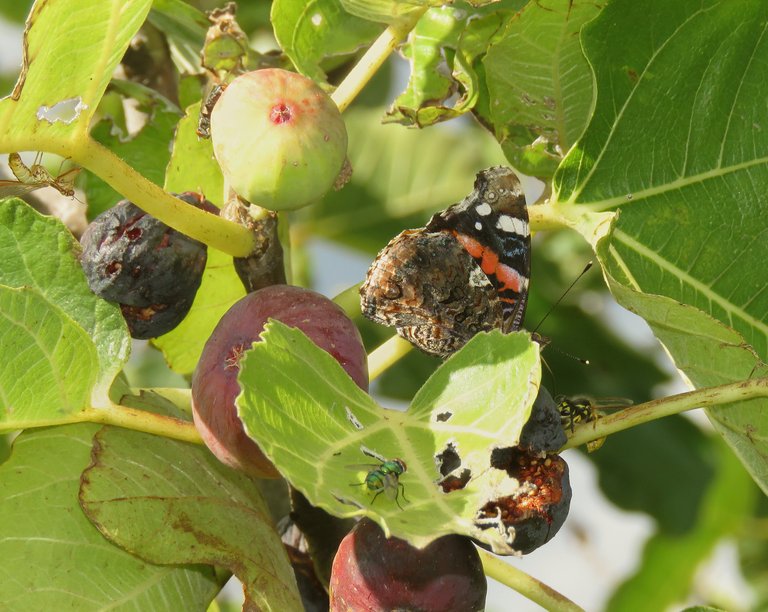
Woe to the blue figs, how delicious these juicy sweets are, just a few marmalades and cakes I make from it, it's no wonder that insects love it, and that evening would be nice in a vase.
:-)
True, it's a universal food.
Congratulations @borjan! You have completed the following achievement on the Hive blockchain and have been rewarded with new badge(s) :
You can view your badges on your board and compare yourself to others in the Ranking
If you no longer want to receive notifications, reply to this comment with the word
STOPTo support your work, I also upvoted your post!
Do not miss the last post from @hivebuzz:
Those delicate wild flowers are so dainty and beautiful. I prefer the butterflies and moths to insects as these look like alien invaders from outer space! I hope they won’t grow any bigger! The lizards are quite cute! I think lizards hunt those insects?!
Fig feast continues! :)
:D Today is the last day of the fig trilogy
What butterfly